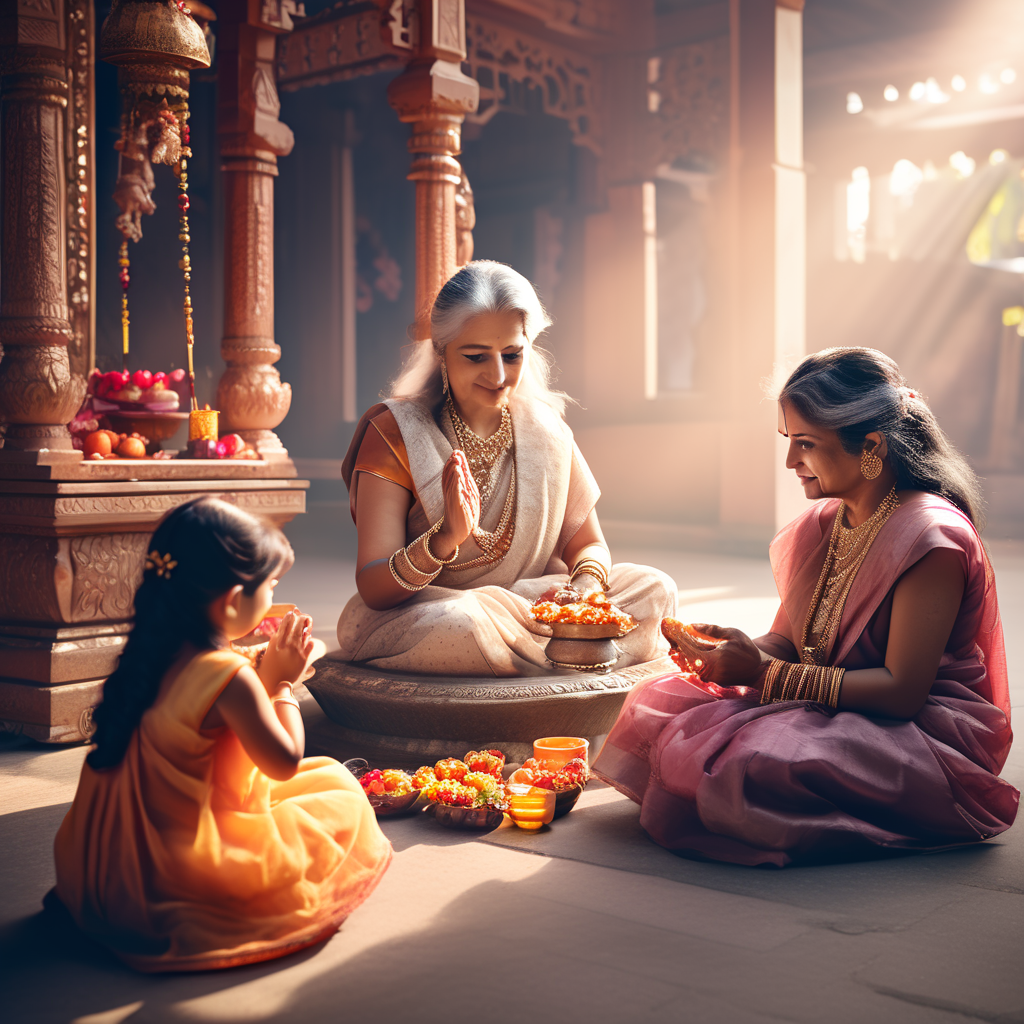Daily worshipping in Hinduism, is a way to build proper religious conduct which helps a devotee to follow the path of spirituality. In their offerings and worship as they animate images of God, devotees evoke the divine which is not only in the idols but also in themselves as they seek blessings, enlightenment, and purity in their daily lives and so, they form a pathway for spiritual enrichment and harmony.
Deity worship illustrated through Panchopachar (पंचोपचार पूजा) and Shodashopachar (षोडशोपचार पूजा ) rituals, therefore, manifests what is regarded as the proper conduct in Hinduism as it brings spiritual alignment through sacred cure.
a. Awakening of Divine Element: Rituals allow the idols to gain Divinity essence that is enhanced by an emotional connect and ultimately result in a profound connection.
b. Divine Blessings: All worshipping of gods is the beginning of divine blessings, which is a great way of spiritual development and harmonious lifestyle.
c. Heightened Consciousness: Participants of activities absorb the essence of the deity, and as a result they get rid of bad energy and raise their consciousness levels.
d. Sattvik Influence: Deity worship brings forth sattvik (pure) vibrations that increase the environment positivity and stimulate us to perform our daily chores with divine grace.
The following types of deity worship have been mentioned in the scriptures. The first two types, which we call ‘worship’, are at the gross level; The next two types are of micro level.
a. Panchopachar Puja ((पंचोपचार पूजा)): Submission of Sandalwood, Flowers, Incense, and Diya to Lord in addition to naivedya (sacred food).
b. Shodashopachar Puja ((षोडशोपचार पूजा )): More than sixteen rituals are provided that includes Panchopachar as well.
c. Manas Puja (मानस पूजा): Mentally visualizing and worshiping the mental image of the deity.
d. Para Puja (परा पूजा ): The worship of Parabrahma the formless God through divine hymns.
Worshiping God is a daily ritual. Perform Trikaal (morning, midday and after sunset) Shodashopachara puja every day. If it is not possible to do such Trikaal, then perform Shodashopachar puja in the morning and Panchopachar puja in the afternoon and after sunset. If it is not possible to perform Trikaal puja, then perform the puja at least once in the morning. If Shodashopachar and Panchopachar worship is impossible, then worship with two treatments of Incense, Diya and flowers. This type of options are given in Dharmashastra. Its purpose is that the deity should be worshiped by the worshiper in any situation.
In deity worship, worshipers stand facing east during the ceremony. Puja rooms preferably face in east and west. The Puja should ideally be done by the earliest male in the household. In his absense, the eldest woman performs the ritual, giving an offering with the chanting of mantras. After worshiping the deity, if possible, all the members of the house should offer flowers to the God and offer namaskar. As far as possible, everyone should be present at the time of Aarti and perform the Aarti in one voice and with emotion. If this is not possible, then one member should sing the Aarti and all the others should clap.
There is a defined way in which one should perform the Puja. The detailed Puja Vidhi for daily worship can be found here. Offering Prasad is an important part of the puja process. You can find the ritualistic process to offer Prasad (naivedya) here
The eternal ritual of deity worship provides a serviceable route to spiritual fulfillment, which results in the development of harmony, devotion, and divine encounters in the lives of daily affairs.


One Reply to “How to perform daily puja Part 1 – Significance and Rituals”
Comments are closed.